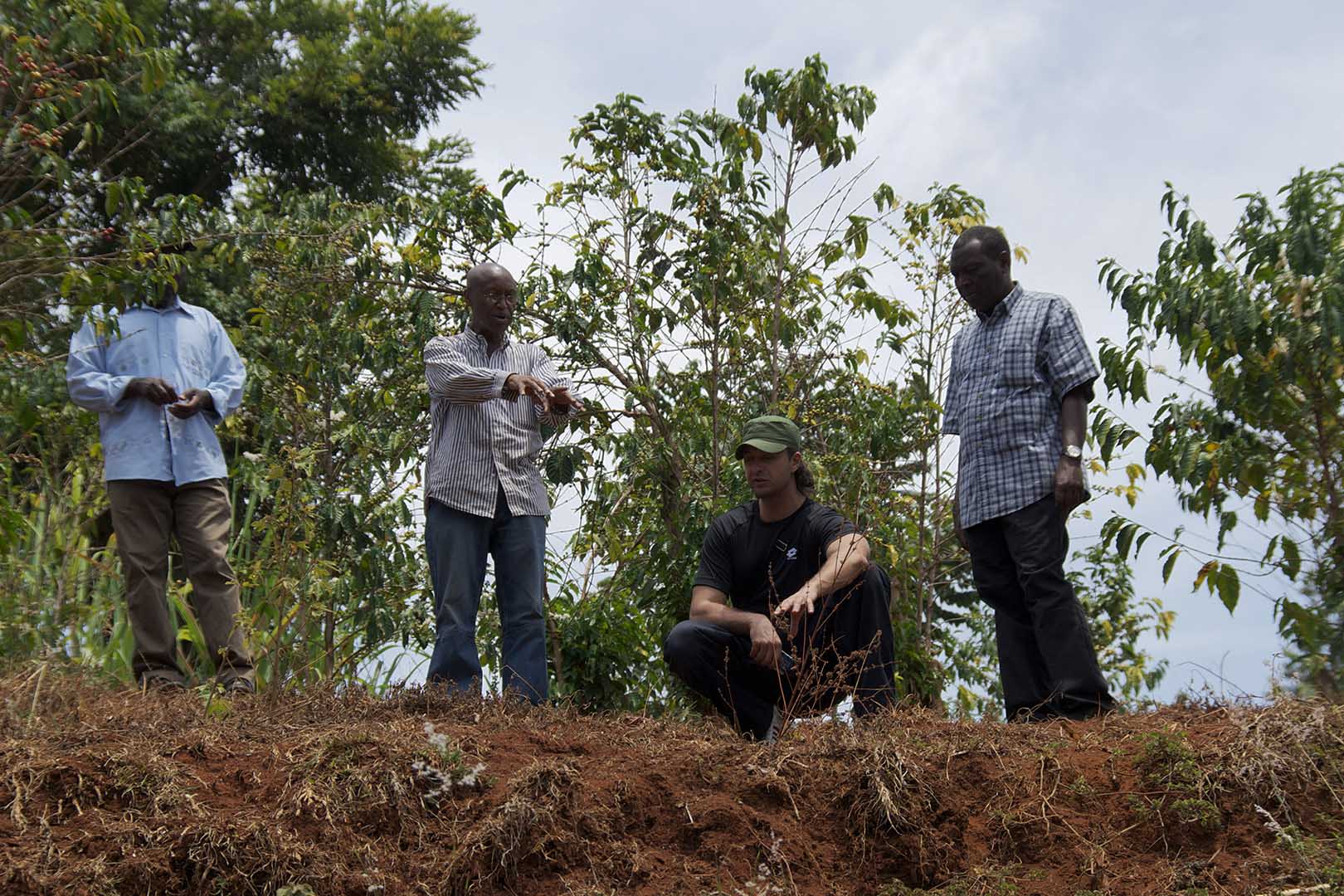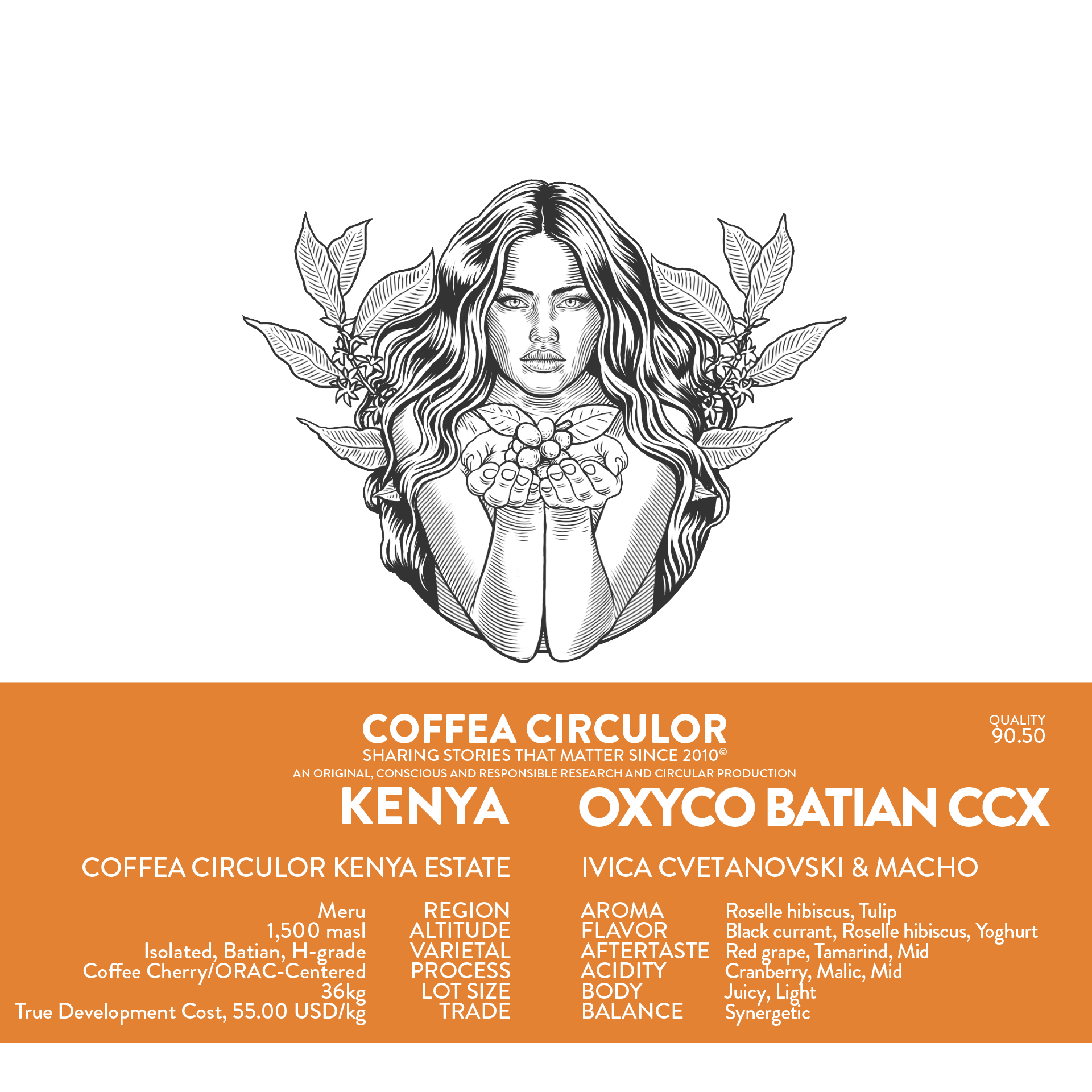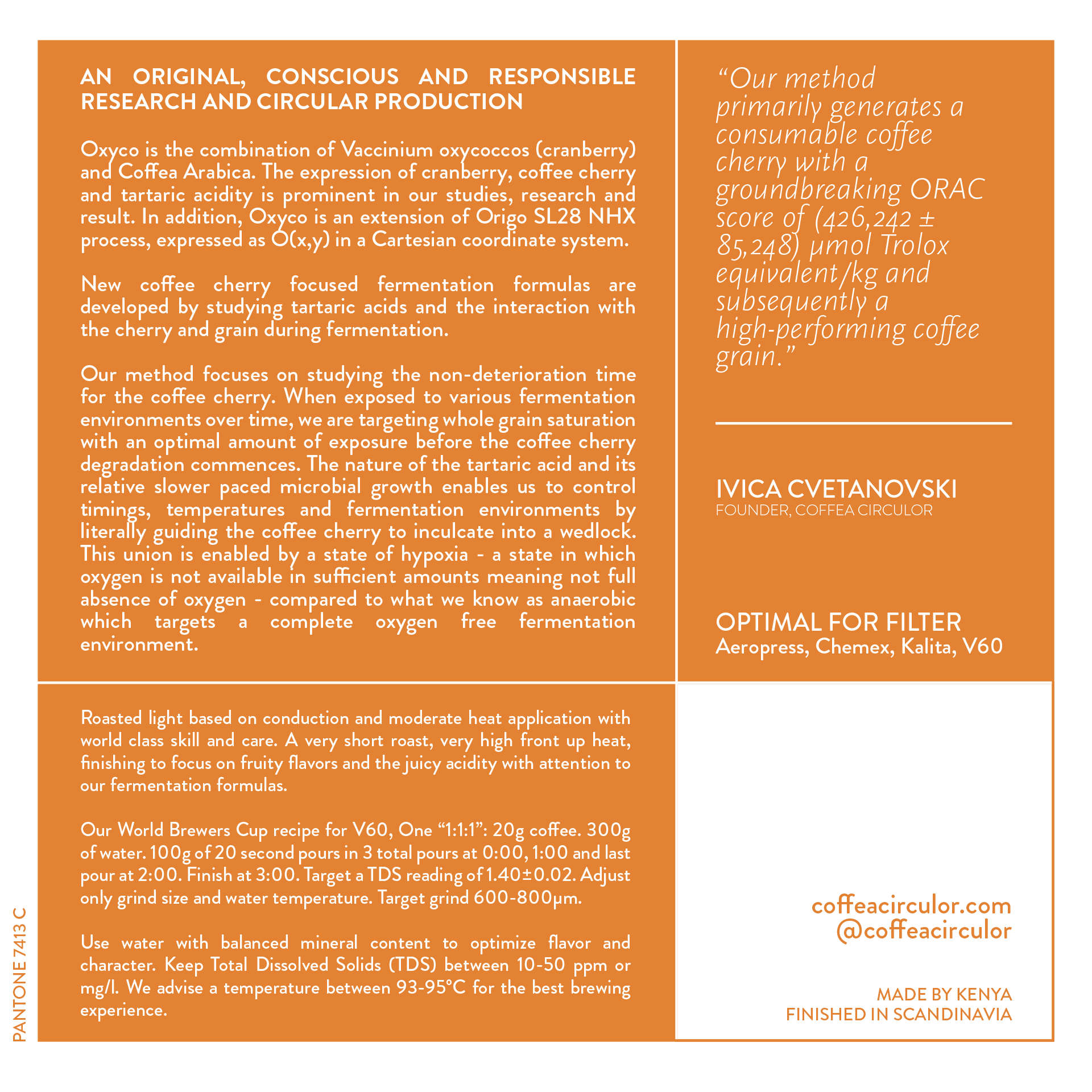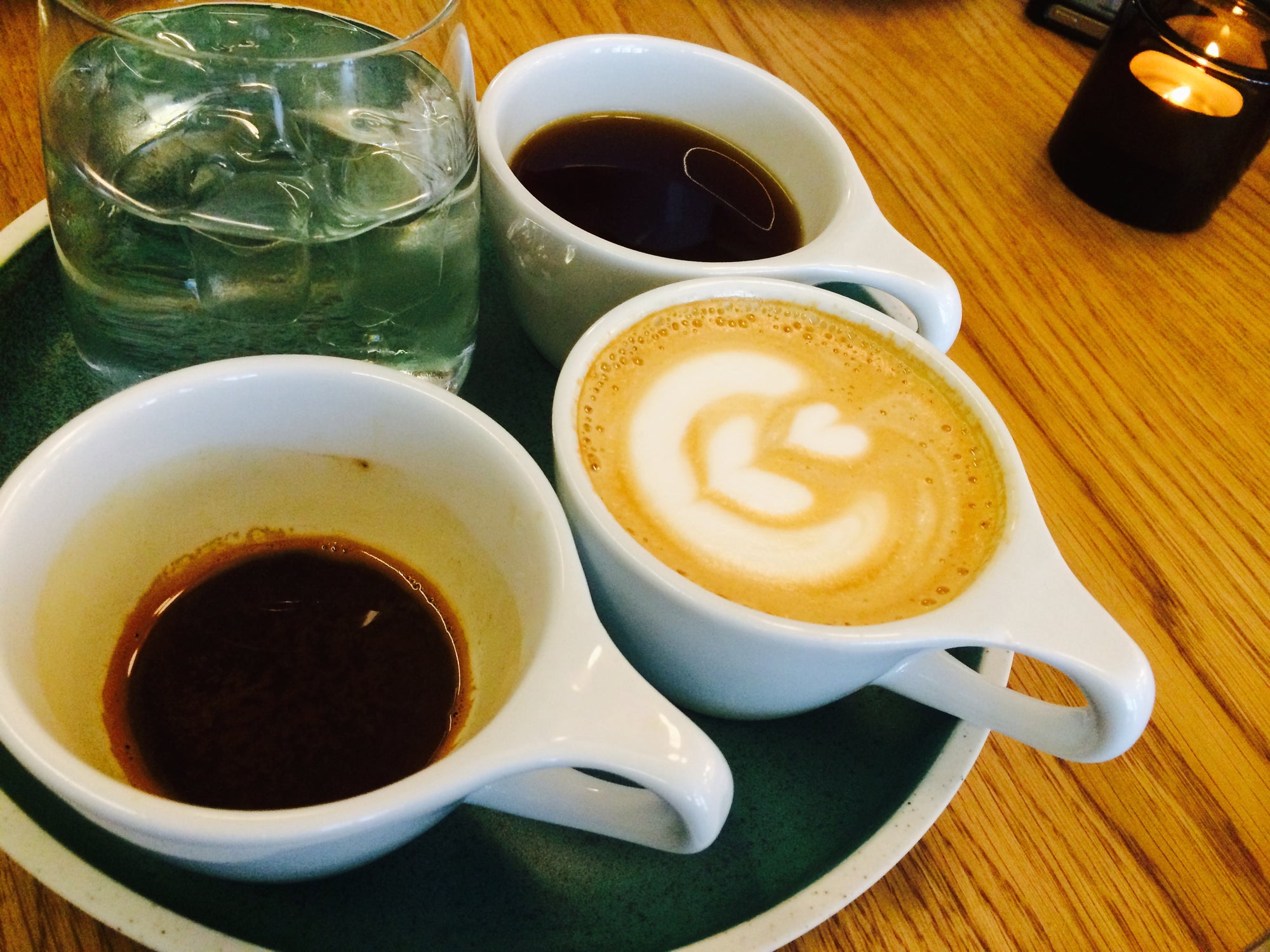In 2005, Coffea Circulor founder Ivica Cvetanovski observed the combination of coffee varieties at Kenyan coffee processing stations. This unification of coffee varieties that make up “mixed lots” at washing stations in Kenya removes the notion of “single estate” and “single variety”. Varieties such as SL28, SL34, Ruiru 11, K7, etc. were “blended” without any particular notion taken to ratio. This is mainly due to small scale farmers / smallholder pick their cherries as a cash crop, delivery to the closest drop off point. Coffee cherries are often personally carried to a local coffee processing station. At the station, cherries are weighted and the producer receive a voucher based on the weight. The voucher can later be redeemed for cash, Mpasa (electronic cash) or other monetary funds. This method of a post-cherry delivery payment is well established in Kenya and also incentivizes the small scale producer to unfortunately not always pay attention the cherries to carry a certain quality. Coffee cherries rather convey a more important heft because it simply is the weight that pays at the nearest processing station. Additionally, no particular notion is put on which varieties are picked and delivered: “the end product is coffee regardless”.
Introduction
We demonstrate an inverted production pipeline, inspired by current and emerging issues in the coffee production in Kenya, where we focus on the coffee cherry being the primary product. Traditional coffee production targets to develop the grain, shadowing the power of the coffee cherry. Our method primarily generates a consumable coffee cherry with a groundbreaking ORAC score of (426,242 ± 85,248) μmol Trolox equivalent/kg and subsequently a high-performing coffee grain. We validate our method by comparing to past years production and performance, grain longevity and customer experience.
Background
In 2005, Coffea Circulor founder Ivica Cvetanovski observed the combination of coffee varieties at Kenyan coffee processing stations. This unification of coffee varieties that make up “mixed lots” at washing stations in Kenya removes the notion of “single estate” and “single variety”. Varieties such as SL28, SL34, Ruiru 11, K7, etc. were “blended” without any particular notion taken to ratio. This is mainly due to small scale farmers / smallholder pick their cherries as a cash crop, delivery to the closest drop off point. Coffee cherries are often personally carried to a local coffee processing station. At the station, cherries are weighted and the producer receive a voucher based on the weight. The voucher can later be redeemed for cash, Mpasa (electronic cash) or other monetary funds. This method of a post-cherry delivery payment is well established in Kenya and also incentivizes the small scale producer to unfortunately not always pay attention the cherries to carry a certain quality. Coffee cherries rather convey a more important heft because it simply is the weight that pays at the nearest processing station. Additionally, no particular notion is put on which varieties are picked and delivered: “the end product is coffee regardless”.
Current status in Kenya
The notion of “single variety coffee” in Kenya has transformed to “Kenyan Heirloom”. Like its neighboring country Ethiopia, the term “heirloom” is a “collective” name for both identified and non-identified varieties. It is also a common practice to “mix” lots in Ethiopia, yet the “mix” occurs earlier in the chain of events - namely unconscious picking by the producers based on what coffee trees are present on their land. At times, some knowledge of specific plants on the producer own land is passed on by ancestors or in-depth botanic knowledge.
The Kenyan sorting mechanism of coffee as a grain is well established with its AA, AB, PB, etc. grades. However, there is no particular variety isolated approach or focus before reaching the sorting station and size-sorting. In addition, processing station workers are (mostly) instructed to quickly inspect cherries via visual cues, namely sort out possible greens and slight anomalies. Even if particular small scale producers harvest and bring a specific variety to stations, it is often “mixed” and not processed separately. This is also due to processing small scale or single lots are too small to be cared for. Another straight forward reason is that much more attention is needed for that particular lot to be processed separately. Attention means time and time is money. Namely, it has to be sorted, de-pulped, fermented in a dedicated water tank, dried in parchment on dedicated raised beds and milled separately. Each stage requires meticulous attention and responsibility, traceability and dedicated staff, individually. With the incentive to produce quantity before quality, this is where we are in 2021 and this is what has taken the center stage in our research and implementation.
Whilst there are some recordings of people in general noticing the sensory experience from Kenya “is not tasting as before”, the notion of “black currant” is absent, something that has carried the Kenyan signum, it is mainly as described the result and effect of underpaid coffee producers. With no incentive provided to produce high-quality coffee and focusing on quantity based on only picking cherries, cooperatively owned processing stations collect available coffee cherries and “mix them in one pot”. With no reference to ratios of the varieties being a key reason, there can be many more that go beyond our knowledge. Regardless, it is alarming and must be addressed from mainly two perspectives: quality coffee production requires attention and understanding from everybody - even end-consumers (both retail and wholesalers). Part of this is our developed Customer Expectancy Price (CEP) and True Development Cost (TDC).
Methodology
Coffea Circulor is transforming the classic Kenyan coffee harvesting, fermentation, drying and trade model which has traditionally been focused on wet fermentation and coffee acquisition of processing stations. Since 2006, we have actively been working in Kenya to establish an open trade platform anchored in a solid pricing model based on the perception of the quality of the coffee. Transparency in Trade, Pricing and Quality was born in Kenya with principles rooted in our past work in the United Nations Environment Programme/GRID.
In order to mitigate the current status and scenario in Kenya, it entails to re-engineer the traditionally fixed-function-pipeline and current coffee value chain from the ground up. In simple terms, we had to restructure the by inverting the Kenyan coffee production pipeline to fit a non-washed fermentation production. All is done from the ground up, “from scratch”, and it is not done overnight:
Grow, prune and pick isolated varieties at specific Brix levels with dedicated training for helper staff.
Build internal infrastructure such as dedicated fermentation areas, drying and planning for future milling facilities.
Careful monitor the changing environment which has been recorded to be changing in the region.
Implement daily routines for sampling and assessment of ongoing fermentation formulas.
Calibrate milling parameters primarily on our baseline fermentation where the grain needs attention to resting time in the dried cherry before de-hulling. The hulling procedure needs particular attention based on the specific isolated varieties due to various bean structures and sizes.
Organize Kenyan export and also Swedish import documentation with dedicated transport.
Visual and sensory analysis after receiving the goods.
Analyze the coffee cherry for ORAC values.
In parallel, roast, analyze and optimize each variety with attention to fermentation formulas.
The study of tartaric acids
Our method focuses on studying the non-deterioration time for the coffee cherry. When exposed to various fermentation environments over time, we are targeting whole grain saturation with an optimal amount of exposure before the coffee cherry degradation commences. The nature of the tartaric acid and its relative slower paced microbial growth enables us to control timings, temperatures and fermentation environments by literally guiding the coffee cherry to inculcate into a wedlock. This union is enabled by a state of hypoxia - a state in which oxygen is not available in sufficient amounts meaning not full absence of oxygen - compared to what we know as anaerobic which targets a complete oxygen free fermentation environment. Additionally, we believe surrounding organisms contribute to the development and efficiency of the fermentation parameters.
Tartaric acid is one of the least antimicrobial of the organic acids known to inactivate fewer microorganisms. Tartaric acid suppresses microbial growth in comparison with most other organic acids (including acetic, ascorbic, benzoic, citric, formic, fumaric, lactic, levulinic, malic, and propionic acids) in the published scientific literature.
From a sensory perspective, tartaric acid has a stronger, sharper taste than citric acid. Although it is renowned for its natural occurrence in grapes, it also occurs in apples, cherries, papaya, peach, pear, pineapple, strawberries, mangos and citrus fruits. Tartaric acid is used preferentially in foods containing cranberries or grapes, notably wines, jellies and confectioneries. We have always targeted pronounced acidity in coffee with a focus on invigorating and vitalizing structure.
All components are equally important in our methodology and they are continuously monitored and mitigated for temperature anomalies, evaluated with samples taken and de-hulled daily, showcasing a very repetitive and meticulous advancement.
Fermentation
New coffee cherry focused fermentation formulas are developed by studying tartaric acids and the interaction with the cherry and grain during fermentation.
Our method focuses on studying the non-deterioration time for the coffee cherry. When exposed to various fermentation environments over time, we are targeting whole grain saturation with an optimal amount of exposure before the coffee cherry degradation commences. The nature of the tartaric acid and its relative slower paced microbial growth enables us to control timings, temperatures and fermentation environments by literally guiding the coffee cherry to inculcate into a wedlock. This union is enabled by a state of hypoxia - a state in which oxygen is not available in sufficient amounts meaning not full absence of oxygen - compared to what we know as anaerobic which targets a complete oxygen free fermentation environment. Additionally, we believe surrounding organisms contribute to the development and efficiency of the fermentation parameters.
Our baseline method results in a saturated “red” sensory spectrum dominated coffee, namely a bright, red fruit enabled aromatics and flavors, reminiscent of white flowers, red currant, ripe strawberry and tartaric acid with strong resemblance to cranberry with elements of volcanic minerals. The result is devised with our World Brewers Cup brewing formula One (1:1:1) achieved with roasts at approximately 65 Agtron / “light” using low mineral water at 10 TDS (ppm).
Kindly observe extracting the coffee with higher mineral content in the water will bring forth more bold, darker colored berries such as blackberries, ripe cherries, overripe strawberries, etc.
From here, the coffee is ready for a dedicated transport to Coffea Circulor's premises in Sweden with express service to ensure no aging of the grain is induced with slower paced shipping methods. This is extremely important when working with new fermentations to be able to evaluate the coffee when being genuinely fresh.
Results
In the past and present, significant research has been conducted on how the coffee cherry affects the grain. The entire ambition and implementation rests on an approach where we primarily focus our efforts on developing a highly nutritious coffee cherry as a final product and thinking about the coffee cherry as the primary objective rather than the coffee (grain) as the final product.
Our mission in 2021 was to additionally tackle the observed challenges spanning back more than a decade. in time and set clear goals that go with our visions. The term “coffee is a fruit” takes on a new meaning with our ambition to imbue the coffee with flavors and our previous recorded knowledge and study of nutrients of the coffee cherry. The result is something “for the people” and also “for the people of Kenya” where we show what is possible to achieve.













